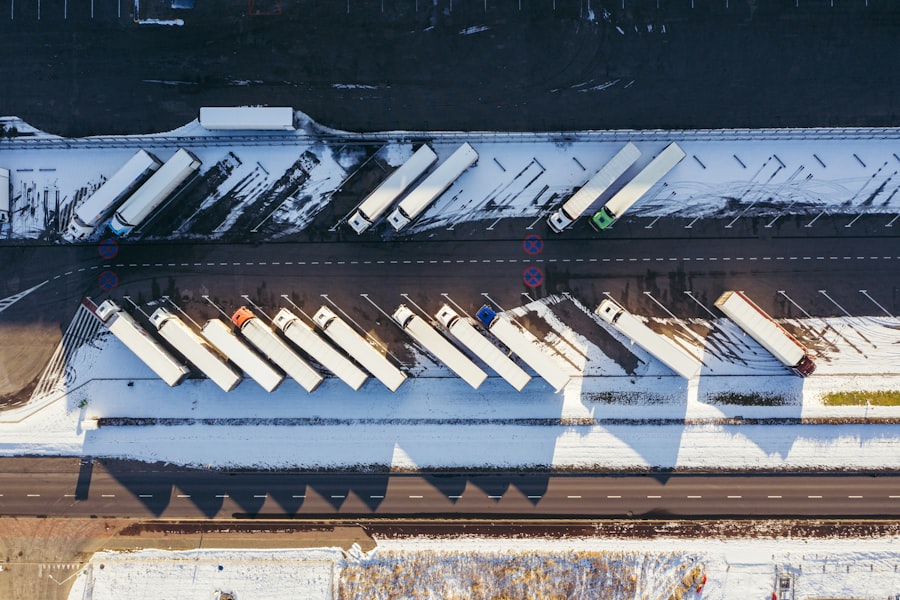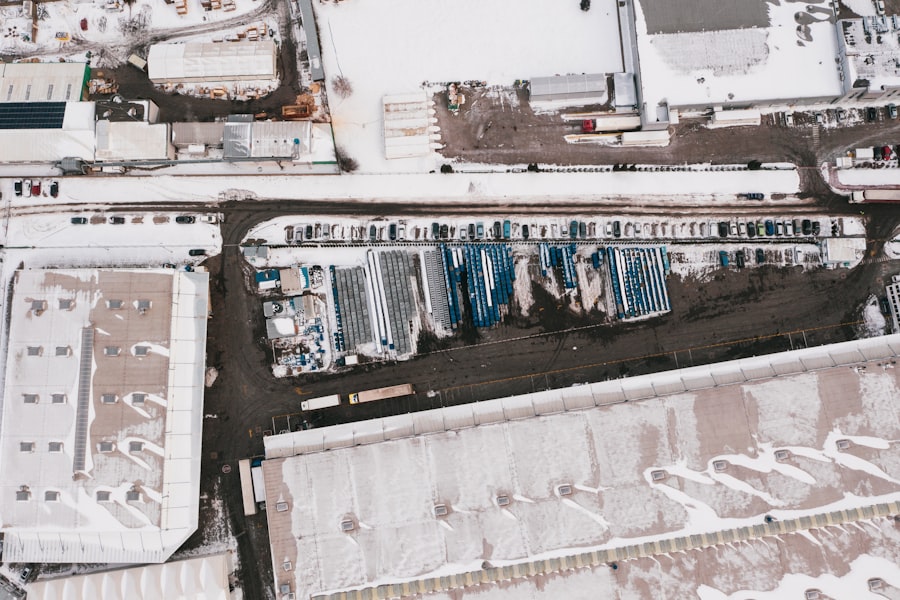The advent of delivery drones marks a significant milestone in the evolution of logistics and transportation. These unmanned aerial vehicles (UAVs) are designed to transport goods from one location to another, often with remarkable speed and efficiency. The concept of using drones for delivery is not entirely new; however, recent advancements in technology, including improved battery life, enhanced navigation systems, and sophisticated payload capabilities, have propelled this idea into the mainstream.
Companies like Amazon, Google, and various startups are investing heavily in drone technology, envisioning a future where packages can be delivered to customers’ doorsteps within minutes of placing an order. Delivery drones operate on a combination of GPS technology and advanced sensors that allow them to navigate complex urban environments. They can bypass traditional road traffic, significantly reducing delivery times.
The potential applications for delivery drones extend beyond just consumer goods; they can also be utilized for medical supplies, food delivery, and even humanitarian aid in remote areas. As urbanization continues to rise and e-commerce grows exponentially, the demand for innovative delivery solutions becomes increasingly pressing. Drones represent a transformative approach to logistics that could redefine how goods are transported in the 21st century.
Key Takeaways
- Delivery drones are unmanned aerial vehicles used to transport goods from one location to another, offering a faster and more efficient delivery method.
- Safety concerns and regulations surrounding delivery drones include issues such as air traffic management, privacy, and security, which need to be addressed for widespread adoption.
- The benefits of delivery drones include faster delivery times, reduced traffic congestion, and lower delivery costs, making them an attractive option for businesses and consumers.
- The current regulatory approval process for delivery drones involves obtaining permits from aviation authorities and complying with airspace regulations to ensure safe and legal operations.
- Delivery drones have the potential to disrupt traditional delivery methods by offering a more convenient and environmentally friendly alternative, reducing the reliance on traditional vehicles.
- Environmental considerations for delivery drones include their potential to reduce carbon emissions and traffic congestion, making them a more sustainable delivery option.
- The future outlook for delivery drones is promising, with advancements in technology and ongoing regulatory developments paving the way for increased adoption and integration into delivery systems.
- In conclusion, delivery drones have the potential to revolutionize the delivery industry, offering numerous benefits while also raising important safety, regulatory, and environmental considerations that need to be addressed for their successful implementation.
Safety Concerns and Regulations
Despite the promising potential of delivery drones, safety concerns loom large over their widespread adoption. One of the primary issues is the risk of mid-air collisions with other aircraft or obstacles, particularly in densely populated urban areas. The Federal Aviation Administration (FAA) and other regulatory bodies around the world are tasked with ensuring that drone operations do not compromise public safety.
This has led to the establishment of stringent regulations governing drone flight paths, altitude limits, and operational zones. For instance, in the United States, drones are generally required to fly below 400 feet and remain within the visual line of sight of the operator. Another significant concern is privacy.
The ability of drones to capture high-resolution images and videos raises questions about surveillance and data protection. Citizens may feel uneasy knowing that drones could be monitoring their activities without consent. Regulatory frameworks are being developed to address these issues, but they often lag behind technological advancements.
As a result, companies deploying delivery drones must navigate a complex landscape of regulations while also addressing public concerns about safety and privacy.
Benefits of Delivery Drones

The benefits of delivery drones extend far beyond mere convenience.
In urban environments where traffic congestion is a common issue, drones can bypass ground transportation altogether, delivering packages directly to consumers in a fraction of the time it would take traditional delivery methods.
This rapid service can enhance customer satisfaction and loyalty, as consumers increasingly expect quick and efficient delivery options. Moreover, delivery drones can operate in areas that are difficult to access by conventional vehicles. For example, rural communities or disaster-stricken regions often face logistical challenges that hinder timely deliveries.
Drones can bridge this gap by providing essential supplies such as food, medicine, and emergency equipment directly to those in need. This capability not only improves service accessibility but also has the potential to save lives in critical situations. Additionally, the operational costs associated with drone deliveries can be lower than those of traditional delivery methods, as they require less manpower and can reduce fuel consumption.
Current Regulatory Approval Process
The regulatory approval process for delivery drones is complex and varies significantly from one country to another. In the United States, the FAA has established a framework for commercial drone operations through Part 107 of the Federal Aviation Regulations. This framework outlines the requirements for obtaining a remote pilot certificate, operational limitations, and guidelines for safe drone operation.
However, companies seeking to deploy delivery drones face additional hurdles related to airspace management and integration with existing aviation systems. To facilitate the integration of drones into national airspace systems, the FAA has initiated programs such as the UAS Integration Pilot Program (IPP) and the Remote ID rule. These initiatives aim to test various operational scenarios and gather data on drone performance in real-world conditions.
Companies like Amazon Prime Air and Wing have participated in these pilot programs to demonstrate their technologies and gather insights that could inform future regulations. However, despite these efforts, the approval process remains slow, with many companies eager to launch their services but constrained by regulatory uncertainties.
Impact on Traditional Delivery Methods
The rise of delivery drones is poised to disrupt traditional delivery methods significantly. As consumers become accustomed to faster delivery times offered by drone services, expectations for conventional carriers may shift dramatically. Companies like FedEx and UPS are already exploring drone technology as a means to enhance their logistics capabilities.
The integration of drones into their existing operations could lead to more efficient last-mile deliveries, allowing them to maintain competitiveness in an evolving market. Moreover, the cost structure of traditional delivery services may be challenged by the efficiency of drone operations. Drones can reduce labor costs associated with drivers and vehicles while also minimizing fuel expenses.
As a result, traditional carriers may need to adapt their business models to incorporate drone technology or risk losing market share to more agile competitors. This shift could lead to a reevaluation of pricing strategies and service offerings across the logistics industry.
Environmental Considerations

Environmental sustainability is an increasingly important consideration in logistics and transportation. Delivery drones have the potential to contribute positively to this goal by reducing carbon emissions associated with traditional delivery vehicles. Electric drones produce zero emissions during operation, making them an attractive alternative for companies looking to minimize their environmental footprint.
Furthermore, as battery technology continues to improve, the range and efficiency of electric drones are expected to increase, further enhancing their viability as a sustainable delivery option.
The production of drones involves resource extraction and manufacturing processes that may have ecological consequences.
Additionally, battery disposal poses environmental challenges if not managed properly. Companies must adopt responsible practices throughout the supply chain to ensure that the benefits of drone deliveries outweigh any potential negative impacts on the environment.
Future Outlook for Delivery Drones
The future outlook for delivery drones is promising yet fraught with challenges that must be addressed for widespread adoption. As technology continues to advance, we can expect improvements in drone capabilities such as longer flight times, greater payload capacities, and enhanced navigation systems that allow for safer operations in complex environments. Innovations in artificial intelligence and machine learning will likely play a crucial role in optimizing flight paths and improving obstacle detection systems.
Regulatory frameworks will also evolve as governments recognize the potential benefits of drone technology for economic growth and public service enhancement. Collaborative efforts between industry stakeholders and regulatory bodies will be essential in shaping policies that promote safe integration while fostering innovation. As public acceptance grows and safety concerns are adequately addressed, we may witness a significant expansion in the use of delivery drones across various sectors.
Conclusion and Final Thoughts
The emergence of delivery drones represents a transformative shift in logistics and transportation that holds immense potential for enhancing efficiency and accessibility in goods distribution. While safety concerns and regulatory challenges remain significant hurdles, ongoing advancements in technology and collaborative efforts between industry players and regulators are paving the way for broader adoption. As we look ahead, it is clear that delivery drones will play an increasingly vital role in shaping the future of logistics, offering innovative solutions that meet the demands of a rapidly changing world.
In recent years, the advancement of technology has significantly impacted various industries, including logistics and delivery services. An article titled “The Ultimate Guide to the 6 Best DJ Software for Beginners in 2023” explores how technological innovations are transforming the music industry, much like how delivery drones are revolutionizing the logistics sector. Both fields are experiencing a surge in regulatory approvals and technological integration, highlighting a broader trend of digital transformation across different domains.
FAQs
What are delivery drones?
Delivery drones are unmanned aerial vehicles (UAVs) that are used to transport packages and goods from one location to another. They are equipped with technology that allows them to navigate and deliver items autonomously.
Why are delivery drones gaining regulatory approval?
Delivery drones are gaining regulatory approval due to advancements in technology, safety measures, and the potential to improve efficiency and reduce delivery times. Regulatory agencies are recognizing the benefits of delivery drones and are working to establish guidelines for their safe and effective operation.
What are some of the benefits of using delivery drones?
Some of the benefits of using delivery drones include faster delivery times, reduced traffic congestion, lower carbon emissions, and the ability to reach remote or hard-to-access areas. Delivery drones also have the potential to lower delivery costs for businesses.
What are some of the challenges associated with delivery drones?
Challenges associated with delivery drones include safety concerns, airspace regulations, privacy issues, and the need for infrastructure to support their operation. Additionally, there are concerns about the potential impact of delivery drones on wildlife and the environment.
Which countries have approved the use of delivery drones?
Several countries, including the United States, Australia, Canada, and the United Kingdom, have approved the use of delivery drones for commercial purposes. These countries have established regulations and guidelines to ensure the safe and responsible operation of delivery drones.
What are some of the key regulations for the operation of delivery drones?
Key regulations for the operation of delivery drones typically include restrictions on flight altitude, weight limits for packages, requirements for remote pilot certification, and guidelines for maintaining a safe distance from people and property. Additionally, delivery drones are often required to have technology that allows them to detect and avoid other aircraft and obstacles.

